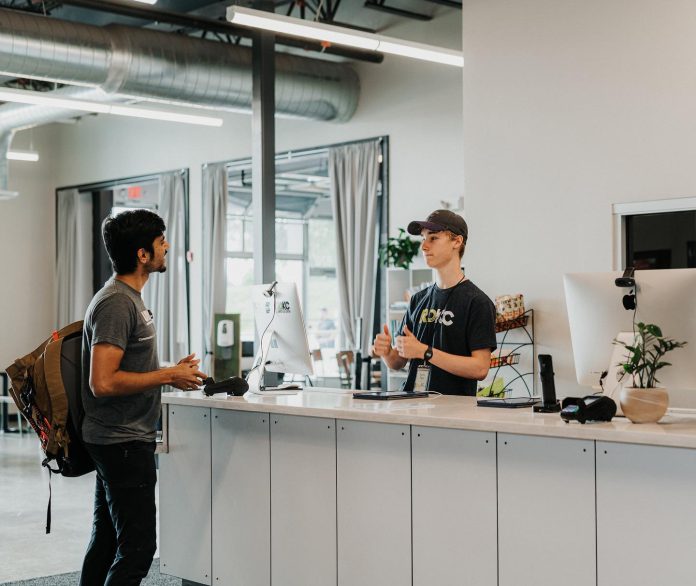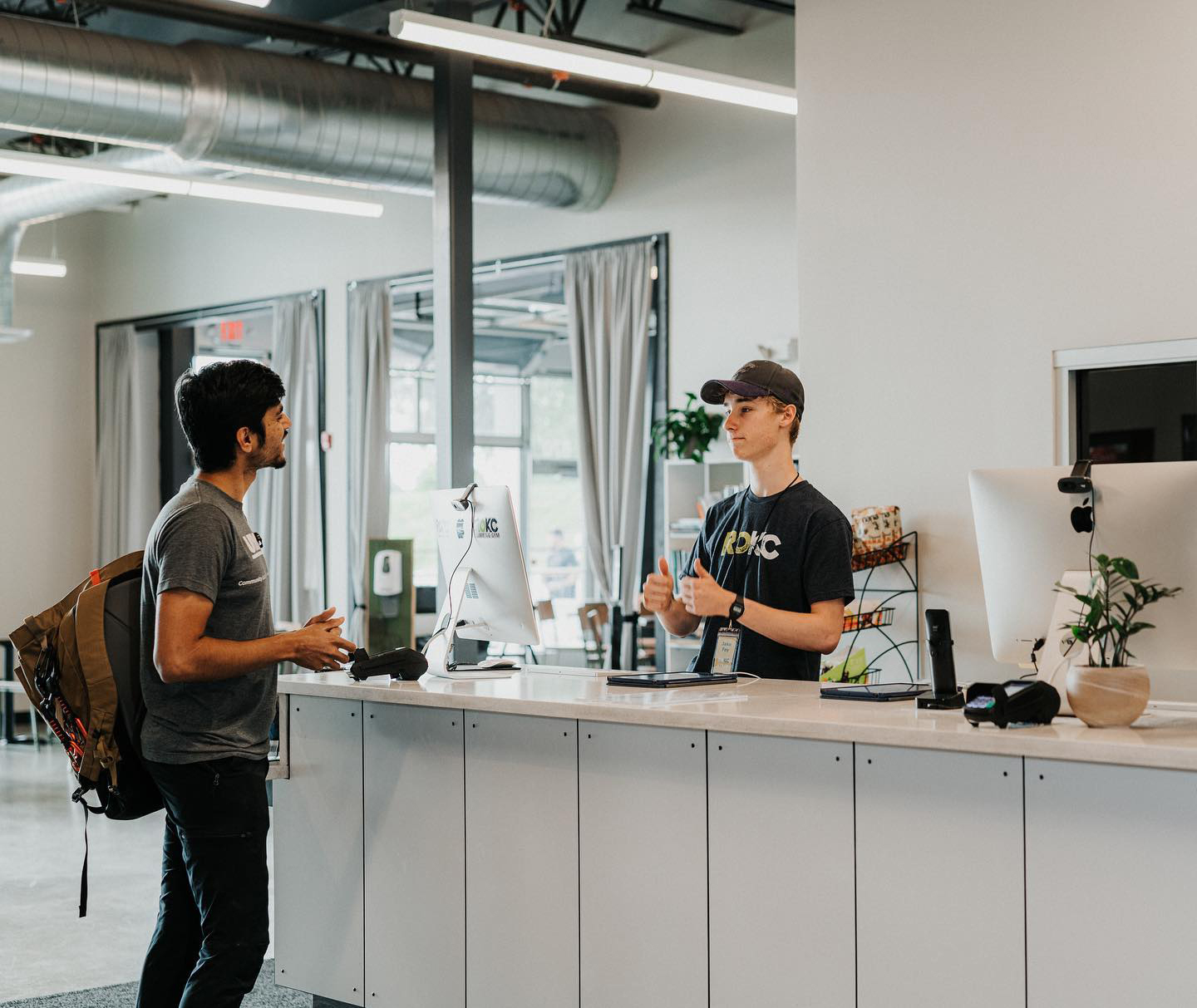
The front desk team is a gym’s first opportunity to make an impression inside the facility, the first chance to show off the personality, knowledge and level of professionalism that exists within the gym’s culture. Having productive employees, who are just as passionate about what they do as they are efficient, can have a great impact on the business and leave guests wanting to keep coming back.
It’s essential that front desk employees understand how to prioritize the customer experience, are trained on climbing basics, are knowledgeable about gear, and know how to utilize technology to simplify their responsibilities.
1. Front desk employees make a connection and leave an impression
The customer experience is one of the primary responsibilities of the front desk. To learn more about improving the customer experience, CBJ reached out to Ashley Roos, Operations Manager at The Crag Climbing Gym. She outlined The Crag’s “Peak Experience” model as part of the training for all employees at the gym, not just the front desk staff. “We rely heavily on our Peak Experience, which are examples of how we want to treat our guests and each other,” Roos explained. This structured approach effectively equips employees with essentials for fostering positive customer experiences that can be used and referenced for every interaction.
The Crag’s Peak Experience:
- Be Welcoming – Make sure everyone who walks through the doors feels like they belong.
- Set Expectations – Let people know what is coming next. For example, walk them through what orientation or testing out for a skill is going to look like.
- Keep It Clean – Personal appearance and a well-kept space feels more inviting.
- Check In on Every Guest – Front desk interactions continue beyond orientations; walk around to make connections.
- Focus On the Can, Not the Can’t – Whether it’s making the next move on a project or just showing up, encourage the positive.
- Say “Thank You!” – Thank the guests for visiting, for trying something new, for bringing in a friend. Whatever it is, extend acknowledgement.
- Be Their Guide – Show the guests the new harness that was just shipped in that they have been needing, offer insight on their project if they need help, tell them about the next exciting event at the gym.

2. Front desk employees continue their education and training beyond onboarding
Good habits are developed over time and employee training shouldn’t stop after the first week of onboarding. It takes ongoing training and education to make sure good habits truly stick.
Chris Marsaglia, formally Head Coach at Movement and currently Owner and General Manager of the new Tomo Bouldering Club, pointed out how—no matter the experience level of the individual—it’s useful to have staff take the intro, intermediate and advanced level climbing classes that are offered at the gym, both to help employees become more knowledgeable about the gym’s programming and to help them grow in their own knowledge of climbing. “If a front desk person doesn’t have a lot of climbing experience, I would encourage them to take our classes and pay them for their time,” Marsaglia said.
For Marsaglia, this idea is ongoing and extends into other areas of a gym’s operations, from shadowing coaches to working with the director of setting on general wall maintenance: “Teaching an individual the themes of the gym and how all the parts of that gym push that theme forward, that’s a good way to open their minds to climbing as a whole.”
Those employees can then hype up the classes, share what they know with community members, and be on a path to eventually instructing those classes, if they wanted to do so. The same is true for being proficient with the preferred software of the gym. There is an opportunity for ongoing education for front desk staff that can help facilitate a more well-run gym through the application of modern technology. Programs like Rock Gym Pro and MindBody include free video tutorials for employees that can range from introductory tutorials to more advanced lessons around leveraging the software for better gym management.
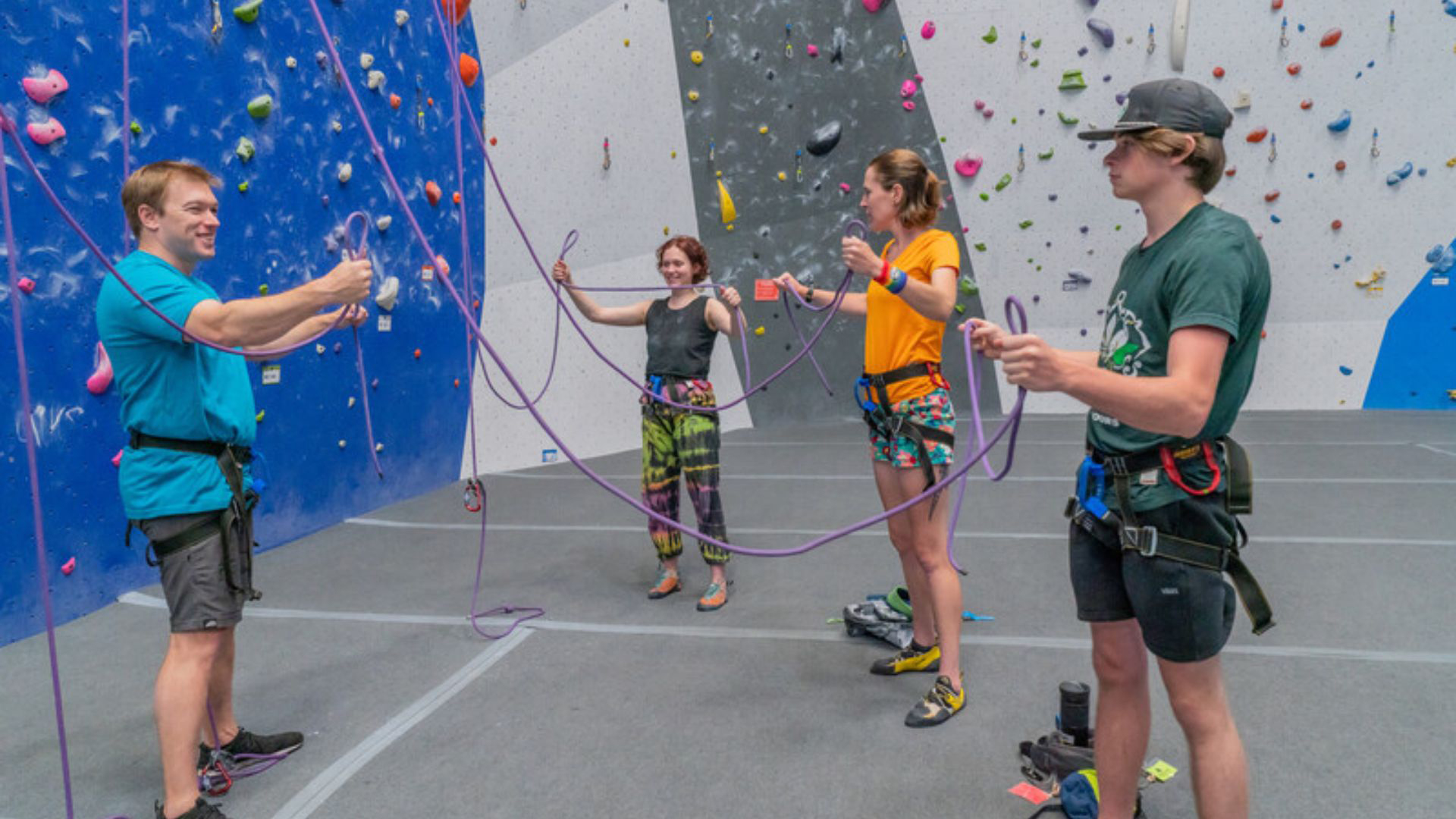
3. Front desk employees are knowledgeable about gear
According to a 2017 study from the American Express Customer Service Barometer, “62 percent [of consumers surveyed] said that a [customer] representative’s knowledge or resourcefulness was key.” In a climbing gym context where the representative is a front desk employee, that knowledge includes understanding the various safety features and functions of climbing equipment. Front desk employees need to understand how to use equipment like belay devices, know how different shoes fit, and be aware of appropriate harnesses for climbing.
This fundamental level of understanding isn’t just for point-of-sales exchanges; as climbing grows in popularity, more people are likely buying harnesses off of Amazon.com and may not understand the safety differences between an arborist harness versus a climbing harness. Good front desk workers can spot the difference and educate the climber as to why the equipment they’ve brought into the gym isn’t safe for climbing. This knowledge generates both the opportunity to prevent an incident as well as foster a good and trusted relationship between employees and community members.
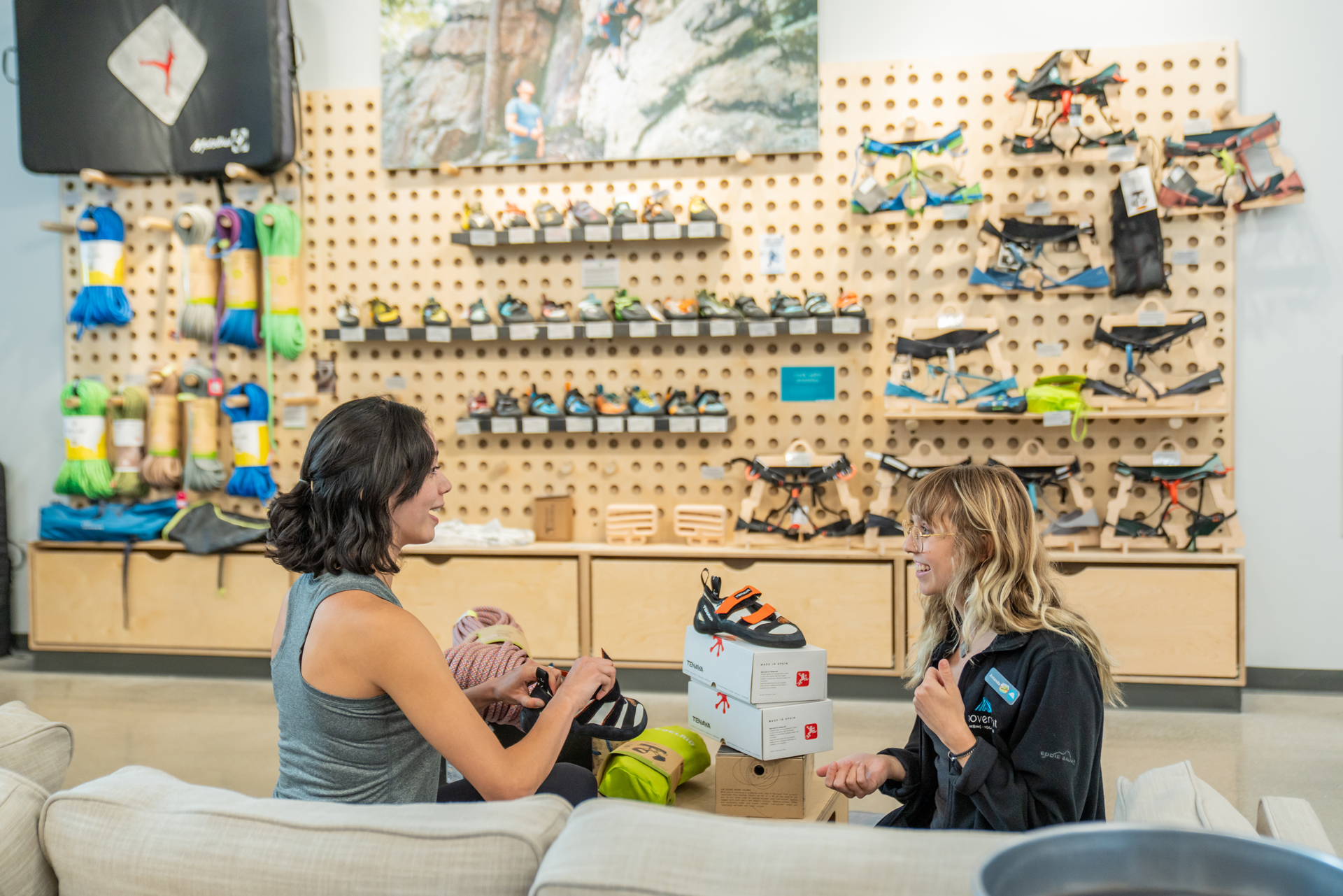
4. Front desk employees anticipate needs
Whether it’s memorizing and understanding the application of different membership options or knowing when someone needs new gear or is ready to level up with a class, a front desk team can anticipate the needs of gym members or potential members just by being informed about what the gym offers.
When someone begins a trial membership, front desk employees should be able to quickly direct the person to the classes that cover climbing basics and fundamentals. For Marsaglia, this customer service skill is at its best when it’s applied to helping customers meet their needs, instead of being used as a tactic to sell a customer something superfluous. “Get to know the clients, figure out what is best for them. (Which will mean being knowledgeable about membership options.) We’re not trying to upsell, but trying to give people what they need or what they want.”
Along this same train of thought, when a member comes in and upgrades to a monthly membership, a knowledgeable front desk staffer can direct the member to their first chalk bag, shoes or harness.
In addition to being knowledgeable about memberships, gear and industry fundamentals, a front desk employee—and all employees—can support the well-being of gym members and the business by being trained in First Aid, CPR and AED use. Marsaglia has already started thinking about the importance of emergency response for his new facility, emphasizing that staff should know if “someone is injured what the procedure is, including crowd management.” It’s no secret that climbing is dangerous and anticipating accidents is a must. Taking the extra step to be prepared can help employees respond appropriately to everything from a scraped knee to life threatening incidents. This preparation can make your facility a safer place to climb. The Red Cross recommends that each place of work has a clearly stated workplace safety plan that employees can easily follow. One of the suggested procedures in that plan is offering training needed to respond to an urgent situation. First Aid/CPR/AED online training starts at $37 and can easily be completed in an afternoon while on the clock.
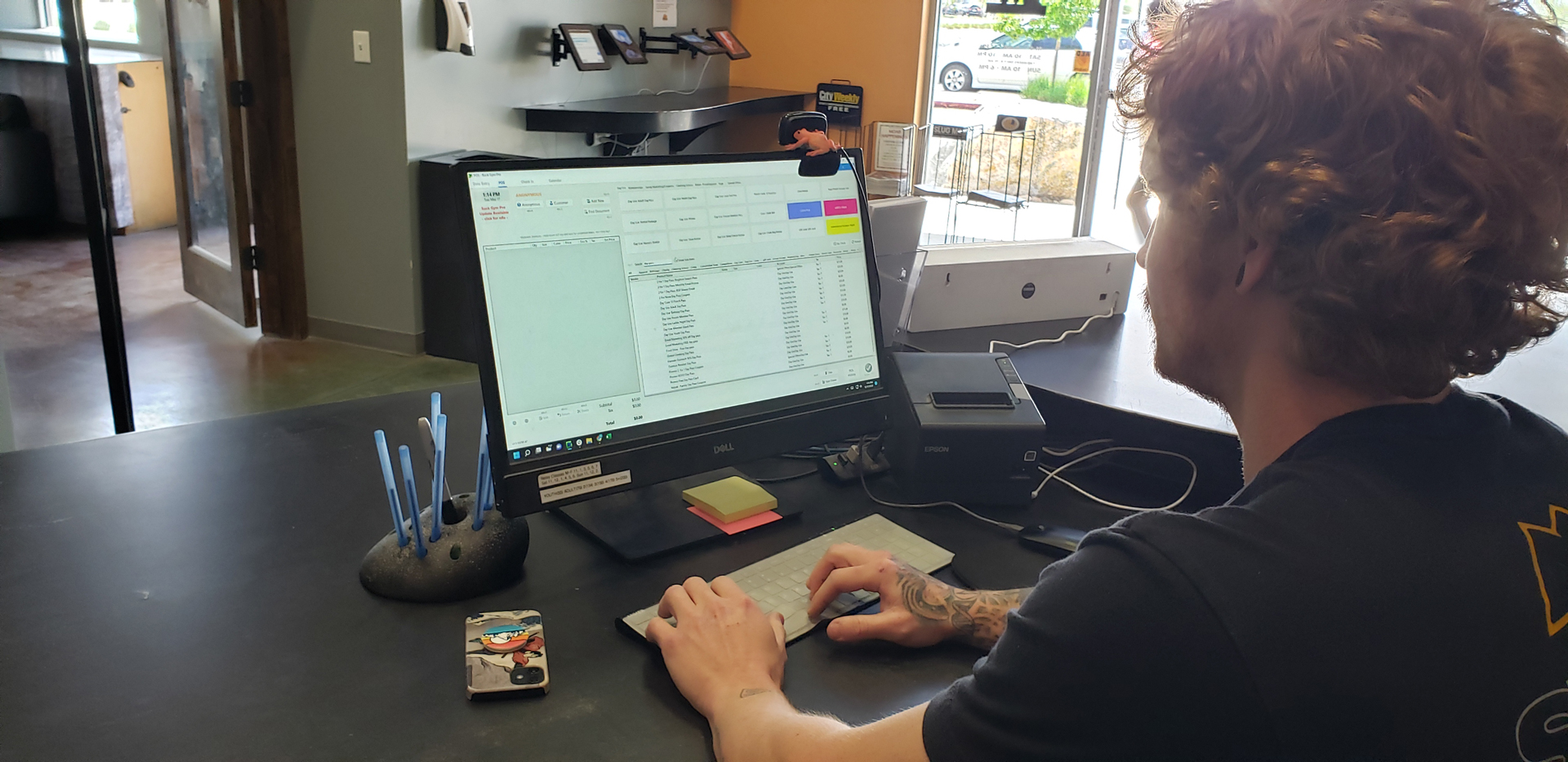
5. Front desk employees let automation handle it
It’s common for the front desk staff to be handling multiple tasks at once, especially during high traffic hours. An employee may be face-to-face with a highly invested parent asking questions about the gym’s youth program that their young climber wants to join. Meanwhile, the phone might ring with someone asking about what time the gym closes, and someone else could be waiting their turn behind the invested parent to ask how to freeze their membership for the summer.
Skilled front desk staff members know how to delegate their responsibilities to automated systems that have been put in place for those purposes. A phone service that lists the hours of operation, a QR code linked to a sign-up page for youth programs, and knowing where the link is on the website to fill out a membership freeze can bring each of these interactions down to less than a few minutes—leaving the clients satisfied and the staff available to address more important needs.
These automated systems, complemented with real-person interactions, can streamline the process for both guests and employees. Roos at The Crag understands there is a balance to implementing automated systems without losing the personal touch. “Teaching someone a process, such as how to set up a membership, is one thing,” Roos explained, “but teaching someone how to talk to another person is another, and that is what will continue to bring someone back to the gym.”
For example, when conversing with the invested parent, a front desk employee could tell them all about the coaches and activities within the youth programs, maybe even introduce them to other parents of climbers in the program. Then, when the parent is ready to move forward, the front desk staff could direct them to a QR code with the link to sign up. This personalized touch, combined with an automated system that’s easy to use, gives an employee the chance to make a lasting impression, while efficiently providing information to the guest.

Jess Malloy is the Head Coach for High Point Climbing in Birmingham, Alabama, and the Head Coach for Catalyst Sports’ Para National team. She is passionate about sharing this sport with all ages and experience levels, and in the past seventeen years she has accumulated experience as a climber, coach, setter, yoga teacher, and published writer. It’s a rarity for her to not be in the gym, but when she isn’t she enjoys climbing and walking outdoors, skateboarding, reading, and indulging in a scary B-movie.



